[/QUOTE]And no, i don't have specific data for each inch of barrel length and it's affect on velocity with supers. 300 blk was designed to be efficient out of short barrels, so it's a game of diminishing returns. With a .30 caliber bullet the barrel length at which you get diminishing returns is much shorter than most other rifle cartridges. I would guess somewhere between 9" & 12" Even at 16", even with slow burning powders I would expect all the powder to be burned up so any additional barrel length causes additional drag resulting in less velocity. Both short-barreled rifle and pistol variants of the MCX Rattler are available.
It uses a specialized upper receiver that is designed to be as compact as possible. The barrel is only 5.5 inches long—something unthinkable with a direct-impingement AR. This short barrel has a 1-in-5-inch twist rate optimized for heavy bullets, and it's paired with an adjustable gas block so you can run the gun with a suppressor, for example.
Surrounding the barrel and piston system is a 5-inch, free-floating M-LOK handguard. Here is the old barrel length again… Longer barrels have been proven to have better velocities and it depends on your burn rate on your powder whether you get the full use of your barrel. The AAC uses a similar weight and dimensional bullet as a 30BR and 20 inch barrels and longer are the standard for those highly accurate bolt guns.
A 30BR pushes from 107 grains to 120 grain 30 cal projectiles. The 30 BR is expected to shoot sub .5 MOA out to 300 meters and weight is at a premium for most of these guns. A lighter gun via barrel would allow more other things to be used.
But shortening the guns usually has resulted in less accuracy. The 300 Blackout was designed by Remington/AAC to create a reliable, compact .30 caliber round for the AR platform that uses a standard bolt and magazine. 300 Blackout is optimized for suppressed fire with heavy bullet subsonic loads but can also be used with supersonic ammunition when extra range is needed. Terminal performance testing on over 2000 Texas feral hogs and various game animals as large as 800 pounds has proven it to kill much more effectively than the 6.5 Grendel, 6.8 SPC, 7.62×39 or 300 Blackout. Due to the optimization of bullet weight to barrel twist, accuracy has proven to be outstanding. Sub one-inch groups are the norm with multiple bullet choices for varying applications such as hunting, target shooting and tactical use.
Short barrel, caliber, bullet weight, twist rate, burn rate, velocity, etc. What does it all mean and how can it be judged, what is effective or acceptable? Should a SBR or pistol in rifle caliber be capable of small groups at 300yds, or decent results at 100yds or less? Not everyone is set up to customize their loads especially for a semi-auto. I'm old school, and never thought of benefits of reloading for a semi auto until now and the 300 Blackout. Do you want the ideal cartridge to use with a suppressor or in rifles with short barrels?
The .300 Blackout has a big advantage over the 7.62×39 in those areas. Because the .300 Blackout is designed for use in a standard AR style rifle, it will still cycle the bolt reliably when using subsonic ammunition and with a barrel length shorter than 16″. Additionally, it doesn't suffer nearly as big of a drop off in performance as the 7.62×39 when using a shorter barrel either. First off, there is no "explosion" with smokeless powder, it burns at a controlled rate. The hot flaming gasses are traveling at the same speed or slightly faster than the projectile, when they hit the still air at the muzzle, the collision causes the bang.
A suppressor does not "handle the explosion", it gives the gasses a place to expand and slow down to subsonic speeds. The next point is if you can't make an "ethical" shot on a game animal with subsonic ammunition, then why would you consider it for combat? An enemy combatant that escapes can shoot at you again. All of this is basic physics, there is no magic when it comes to how gasses or projectiles act. No projectile/case option is ideal, they all have pluses and minuses and are a compromise in some way.
If you need to shoot a .30 cal then an AR-10 in .308 is the way to go with the trade off of more recoil and heavier ammunition. That did more to spark interest in NFA items than anything. And adding a foot-long can to a full-length rifle is not optimal, particularly when you can push a 220 grain bullet to just under the speed of sound in six inches or so. If you build an AR pistol, the 300 is the perfect round. Its not going to be long until you want to suppress it and/or SBR it.
If you start with wanting a suppressed gun, you will eventually get to the 300. Since the paperwork and tax didn't kill you, and they already have your fingerprints, you're gonna want to SBR it. Any time you put a can on a rifle, an adjustable gas block will allow you to tune it. I came here for a clue about what barrel to get for a pistol build, but I know once I have it I'm going to want a real stock and a suppressor. Then one day I was corresponding with Ron Reiber of Hodgdon Powder Company and he strongly suggested that we try their new CFEBLK powder.
To make this long story shorter, this ended up being a game changer and the final piece to the puzzle. It gave us improved accuracy and more velocity with less pressure allowing me to exceed my original velocity goals. Once I decided on a 1-15 twist rate for the barrels and we were good on ballistic performance and accuracy, all that was left was to decide on a name and test real world terminal performance. But it's really a 100-yard rifle with supersonic ammunition. At 1,900 fps, you'll still get a good permanent wound cavity, some temporary cavity and the ability to defeat armor in most cases. I would deploy this as a dedicated entry rifle in a heartbeat.
I would use the 110-grain Barnes TAC-TX load and never feel undergunned. But if you want range, get a longer-barreled rifle with a slower twist rate to optimize 125-grain loads. Of course, given the Rattler's short barrel, some gel testing was in order.
I wanted to see if the bullets would expand at close range given their lower velocities. Each block of calibrated Clear Ballistics gel measured 4 by 4 by 17 inches. I fired the Rattler off-hand from 10 and 15 yards with the earlier test loads and a few others, including Winchester's 150-grain Deer Season XP ammunition and Nosler's 220-grain BTs. These two hunting loads made perfect little holes and passed through their blocks without expanding. The heavier 120- to 125-grain loads performed similarly.
However, moving to the Barnes, Hornady and Lehigh Defense rounds changed things. Lighter bullets offer more speed and a straighter, more accurate trajectory for long-range shooting, but this also means it can be more easily blown off course and will not damage the game as efficiently. Therefore it isn't the best choice for certain hunting scenarios, especially larger games such as deer or hogs at a longer distance. This is because heavy grains provide better target penetration, but might not provide the same accuracy over long distances since its trajectory will drop more the further it travels. For velocity and accuracy testing, I used a combination of everyday ammo like American Eagle 55-grain FMJ and M855 Steel Core, and Norma 77-grain Match ammo.So why does this happen? It's almost certainly not because the "powder didn't have enough room to burn." Generally speaking, all the powder THAT IS GOING TO BURN does, in fact, burn in the first few inches of barrel length.
What it does tell us is that the gas cloud is still expanding faster than the volume of the barrel is increasing when the bullet exits a 16-inch barrel. In other words, pressure is still building when we run out of barrel in the 16-inch rifle, so some of that pressure is wasted. There is one other variable that probably contributes to this difference. The same can be said for virtually all bottle neck rifle cartridges -- from 223 to the biggest magnums. And yet we have long barrels for many applications, such as long distance shooting.
And applications where one wants to minimize bullet drop and wind deflection. And applications where one wants to maximize down range velocity to increase energy on target. A big advantage to the .300 Blackout is that it allows a user to use only one caliber while switching between barrier penetrating, subsonic, and supersonic ammunition all the same time. I vote for AR15 in 7.62 x39, only a bolt, (not b.c.g.) is needed, you might need an extended firing pin, of course 7.62×39 barrel and magazines are required. When you shoot this combination, there is no doubt of the increased power over 5.56x 45. I have built 4 AR15s in this caliber, and while a bit more difficulty is involved the extra effort is well worth it.
Most loadings for this cartridge are designed for 16″ barrels, so not much velocity is lost with shorter barrels. Depending on barrel mfg. gas port may need to be opened up some, unlike 5.56×45 chamberings which are typically overgased with carbine length gas systems. Most factory ammunition, both supersonic and subsonic, contains a powder charge that completely burns in a barrel between 9-10" long. There is no need for a .300 Blackout firearm to have a barrel longer than 10.5". Longer barrels provide minimal muzzle velocity, but they add weight.
Some weight can be beneficial to combat recoil, but a rifle that is too heavy is cumbersome. And no, i don't have specific data for each inch of barrel length and it's affect on velocity with supers. Sticking with .308s for a moment, let's look at a cartridge whose performance and use depends heavily on barrel length and twist rate. Since 300 BLK is made to be fired supersonic or subsonic, suppressed or unsuppressed, it comes with a huge spread of grain weights. Picking a twist rate will depend exclusively on what type of 300 BLK you chamber most often. In fact, depending on what twist rate you select, you may be able to shoot only supersorsubs, but not both.
Just like barrel length, there is almost never a "best" twist rate for any caliber - unless you shoot one, single load within that caliber and you never chamber anything else. That's because calibers utilize different bullet weights for different applications, and the weight of the bullet in question is what determines an optimal twist rate. For example, 5.56 NATO can be loaded with bullets weighing less than 50 grains, and up to 90 grains. No single twist rate will be universally optimal for all those different 5.56 variants. Barrel length directly affects the velocity of your cartridge.
If your barrel's too short, the gunpowder in the shell casing won't have enough "burn time" to accelerate the round downrange, and your round won't reach optimal speed. This will result in the round dropping too quickly and/or being affected by wind drift more than it should. Total effective range will be dramatically reduced, and you'll have less energy striking your target. A lack of energy is of particular concern in self-defense and hunting situations. The 300 Blackout is an excellent mix of power, ballistics, and range. All of these qualities can be harnessed using the right barrel.
The length directly affects the velocity of the projectile, accuracy, noise, and recoil of a weapon. While searching for a good 300 Blackout barrel, you must consider features such as material, contour, profile, length, gas system length, weight, and twist rate into consideration. A google search used to bring up a certain blackout "development history" on the first page.
And having more muzzle energy than a 223, especially for shorter barrels. The tradeoff for using subsonic ammo is that since the projectiles are heavier and travel at a lower velocity, they drop faster. A typical 190-grain subsonic bullet drops 4" at 100 yards, approximately 30" (2.5') at 200 yards, and about 96" (8') at 300 yards. This significant bullet drop means your subsonic .300 Blackout's effective range should remain within 100 yards. The shorter the gas system, the more reliably your sub gun will cycle suppressed, subsonic 300 BLK loads.
For the subsonic load, muzzle velocity is 1,010 feet per second, and muzzle energy is 498 foot pounds. Downrange, the .300 Blackout is accurate enough to deliver groups smaller than one inch at 100 yards. The .300 AAC Blackout is a new cartridge with many positives, including its compatibility with the M4 platform. It can be shot from both short and long-barrelled firearms, and is considered an accurate choice in both subsonic and supersonic options. This lends itself well to home defense, hunting, and even performance competitions, such as a 3 gun match. Thus, knowing your rifling pattern in preparation of shooting is an important step to ensure you are choosing the best bullet for what you have.
It means the gun, including barrel length, twist rate, bullet length and weight, have to be enough to stablize the bullet. E.g. my application for a SBR in 300 Blk is for hunting out to 200 yards. However, I find by repeated testing, that no matter what ammo I use, I get marginal accuracy for hunting at 200 yards. When choosing between 300 Blackout 1-8 or 1-7 twist rates, consider over-stabilization. This usually happens when you shoot a bullet through a gun barrel with a faster twist rate than what's required for the particular bullet weight.
Use caution when hunting with .300 Blackout subsonic loads though. Those loads can be very accurate, but there are a lot of bad stories about poor terminal performance on deer and feral hogs when using subsonic .300 BLK ammo. Presumably, this is because those loads just don't have enough velocity for the bullets to expand on impact.
Instead, they just blow straight through the animal and don't cause much damage. Around the same time, leaders in the military started to look for a new cartridge that could reliably shoot .30 caliber bullets from an M-16 or M-4 rifle while still using a standard bolt and gas system. Additionally, they wanted a cartridge dimensionally similar enough to the 5.56x45mm that a standard M16/AR magazine could still hold 30 rounds of the new cartridge without any modifications. A nine-inch barrel will guarantee that your .300 BLK cartridges burn all their powder, achieving optimal velocity with the shortest barrel length possible. This length will provide similar performance to an AR-15 chambered in 5.56 or .223 with a 14.5" to 16" barrel. They use a 50% hit probability to determine max effective range.
The reason I want to shorten the barrel is that I plan on shooting mostly suppressed. Adding a 9" suppressor to a 16" barrel would make it cumbersome and muzzle heavy. If I was really fixated on supersonic long range performance, I would not really be considering a 300BLK as a good starting point.
The only reason a 300BLK exists with a 16" barrel is because the ATF says that rifles must have 16" barrels, not because it makes any sense. This demonstrates a distinct advantage in favor of .300 Blackout ballistics when fired from two of the most common barrel lengths for the modern M4 carbine – 14.5" and 9". Due to greater kinetic energy stored in the heavier .308" caliber projectile, the reduction in velocity does not affect hit probability to the degree it affects the 5.56x45mm cartridge. Aluminum is much lighter than copper or lead, which is why this bullet only weighs 78 grains versus 115 grains for most supersonic 300 Blackout bullets. Due to the bullet's light weight, it's able to reach a muzzle velocity of 2,800 fps—almost as fast as a 5.56 and much faster than standard 300 Blackout ammo. The basic weight of a bullet is expressed as the bullet grain.
One grain equals 1/7,000 pound and refers to the weight of the projectile firing from the barrel. There are pros and cons to shooting both lighter-weight bullets vs heavier grains, and you should always know what is offered in the caliber ammo you have chosen. For example, the 300 BLK is commonly found between 110 gr and 220 gr options. Choosing a barrel for your 300 BLK shooting needs depends on your use of the firearm and the weight of the cartridge you plan on shooting.
Part of this choice involves the rifling, or barrel twist that works to stabilize your bullet when you shoot. Take a look at a quick breakdown to better understand the 300 Blackout 1-7 vs 1-8 twist rate to determine which is the best option for your needs. To accomplish this, Advanced Armament Corp. took plenty of time to conduct ballistic testing. They found theoptimal barrel length for 300 BLK is between 9" and 11.5". A 9" barrel will allow any 300 BLK cartridge to reach optimal velocity, while an 11.5" barrel will provide a bit more accuracy and stability if you plan on shooting mostly supersonic loads. One notable difference between 5.56 and 300 BLK is bullet weight.

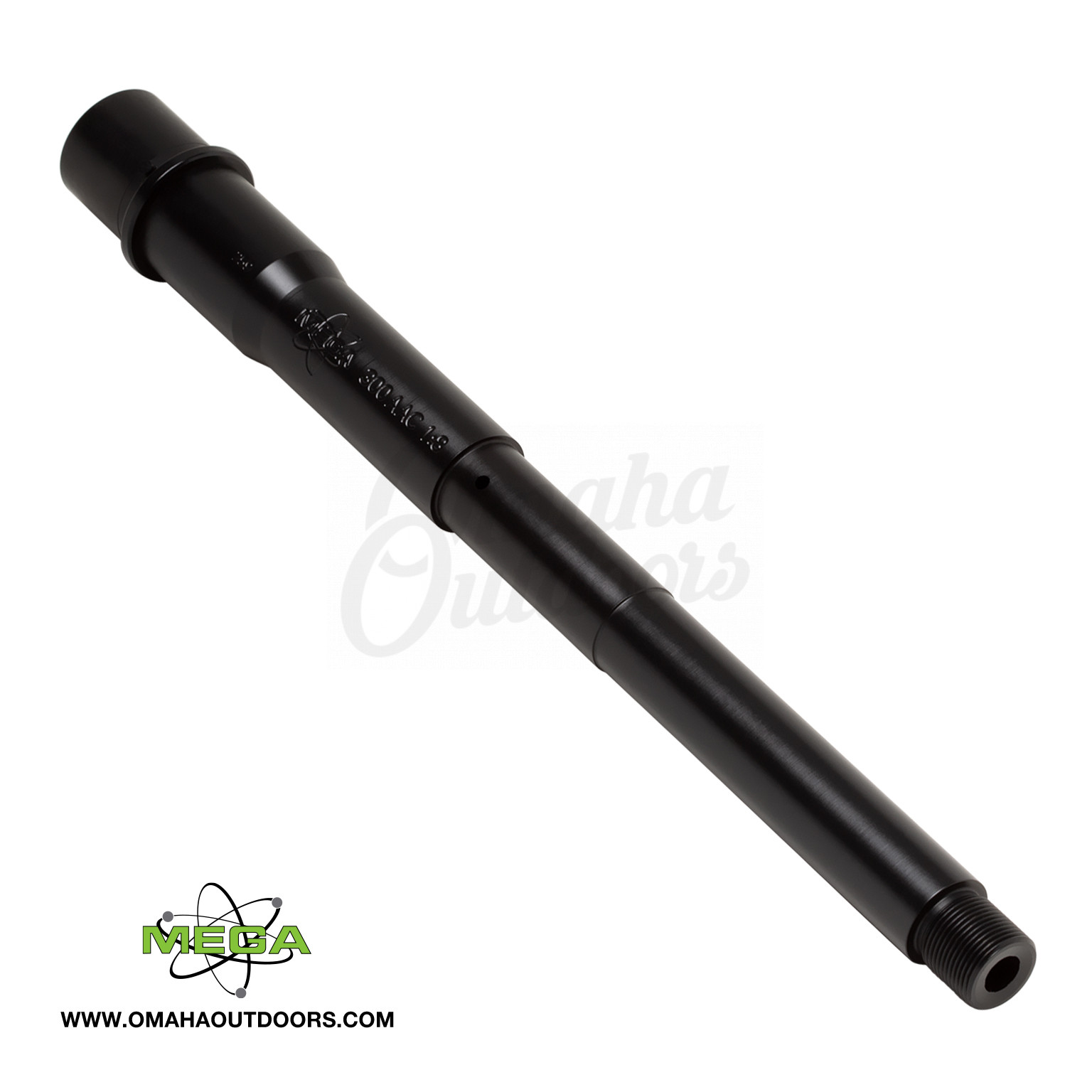





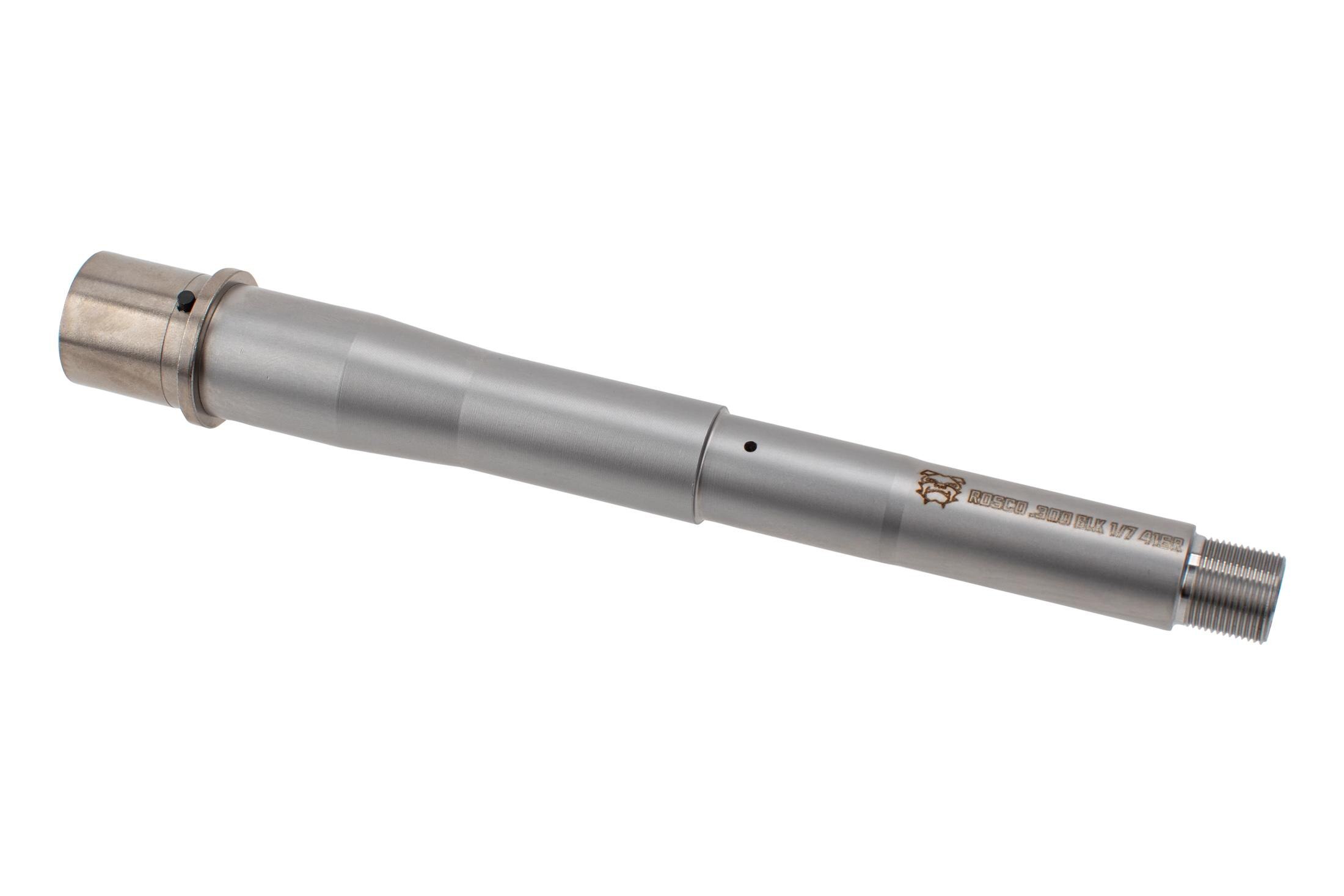



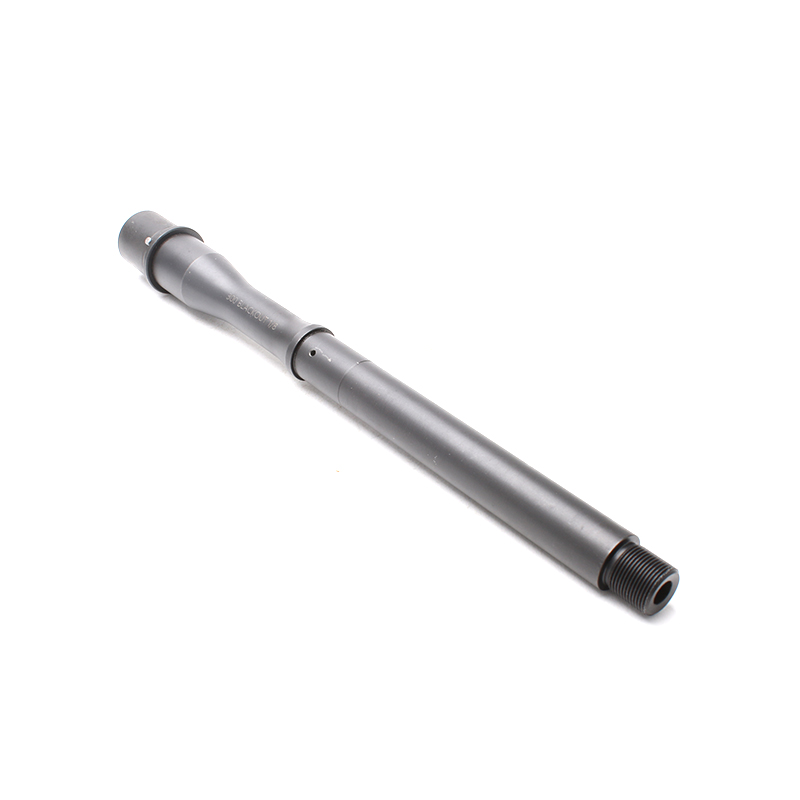
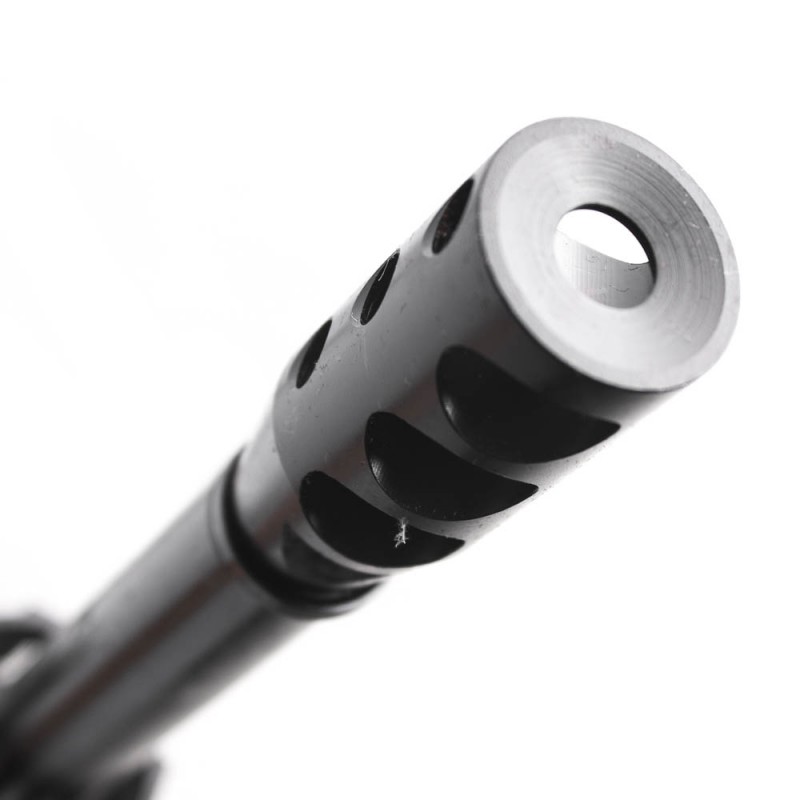




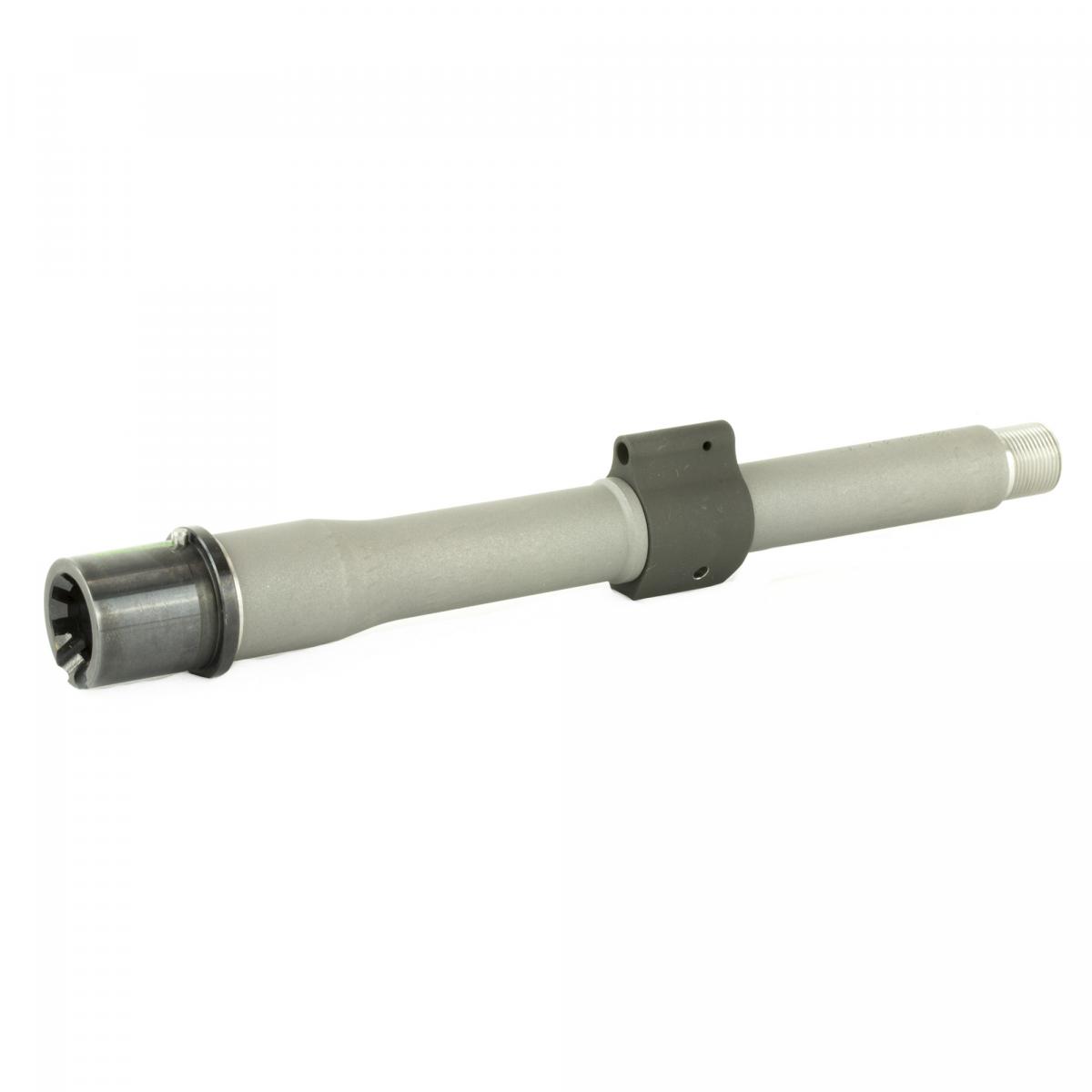









No comments:
Post a Comment
Note: Only a member of this blog may post a comment.